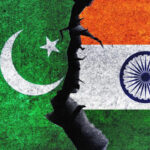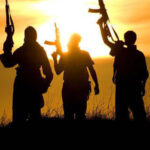Rather than IS or religious ideology, friends and social media play crucial role in Kashmir, say reports
When Hizbul Mujahideen militant Rauf Khanday, 21, from a village in Anantnag was killed in March 2018, thousands attended his funeral, and the footage was streamed across social media in Kashmir.
Amongst those watching was Zubair Ahmad Wani, who lived just a kilometre away from Khanday’s home, and had known him well. Wani, an M.Phil student in political science at a university in Madhya Pradesh, said not a word at the funeral, according to his family. But three weeks later, Wani, who was not known to have expressed a desire for militancy ever before, took up the gun.
The cases of both Khanday, who, too, had given no inkling that he would join militancy, and Wani are evidence in studies that show that extremist ideology and pan-Islamic discourse have much less to do with the recruitment of militants in the latest round of violence in Jammu and Kashmir. The studies found that only 2% of the militants had ever studied at a madrassa or religious school.
Instead, local factors like geography, involvement of friends, family and neighbours, and social media shares amongst close groups have had a much higher role to play in motivating these men, mostly in their 20s to become militants .






NO COMMENT